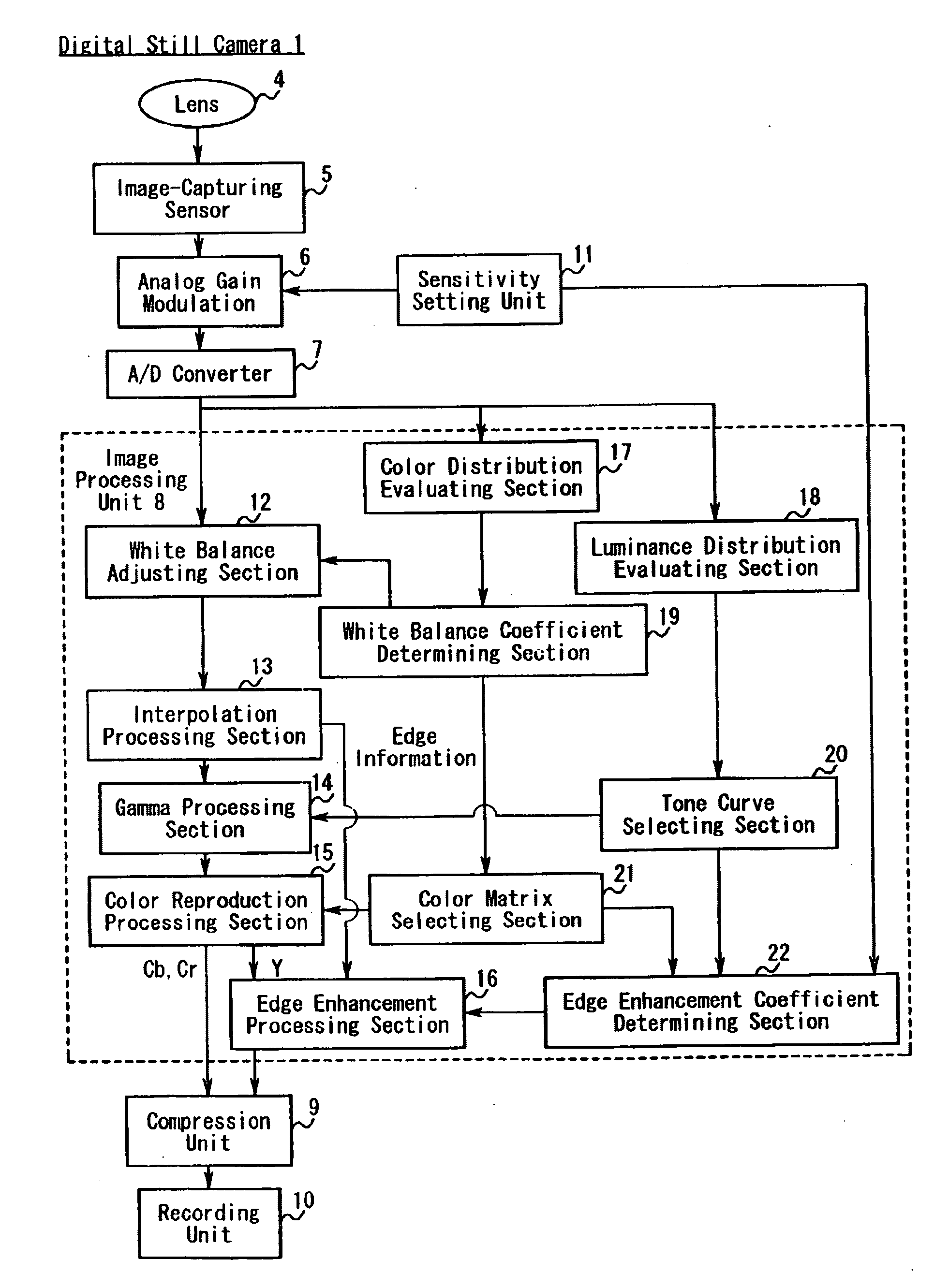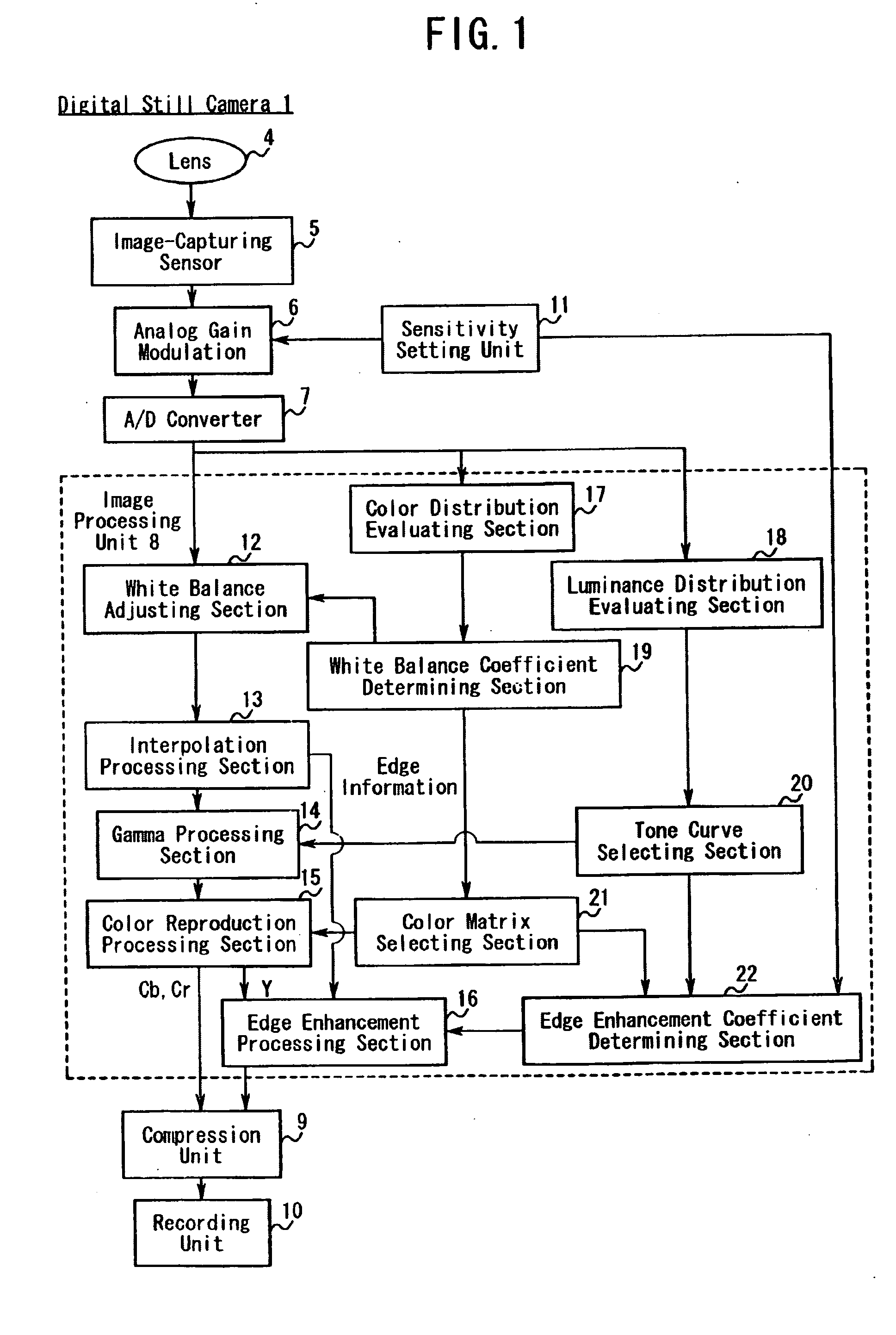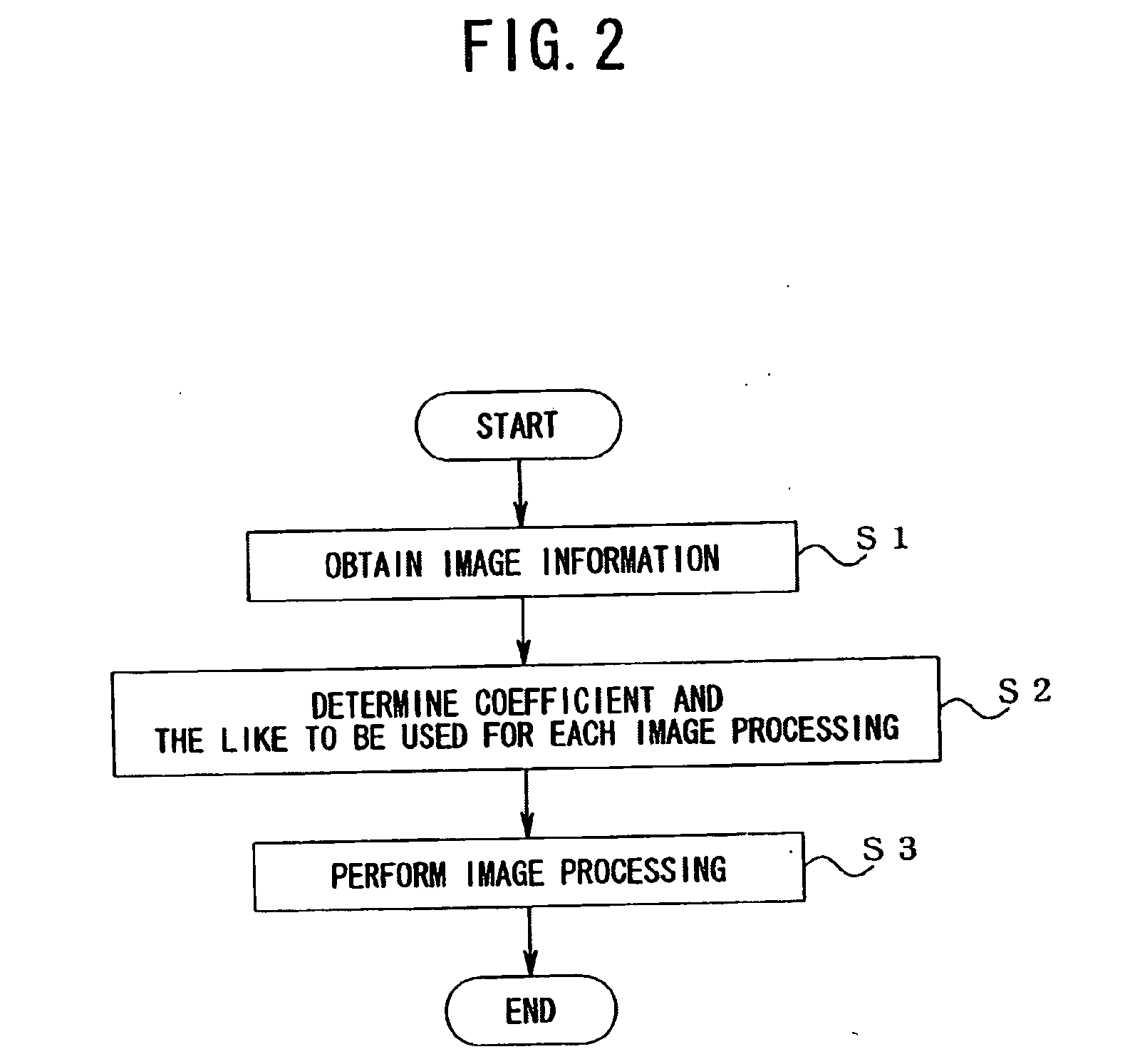Image processing apparatus, image processing program, and image processing method
a technology which is applied in the field of image processing apparatus and image processing program, can solve the problems of difficult to prevent noise and chromatic aberration from getting worse, and the edge enhancement processing is difficult to prevent. noise and chromatic aberration to increase, and achieve the effect of preventing the increase of noise and chromatic aberration
- Summary
- Abstract
- Description
- Claims
- Application Information
AI Technical Summary
Benefits of technology
Problems solved by technology
Method used
Image
Examples
first embodiment
[0044] Explanation of First Embodiment
[0045] A first embodiment of the present invention will be explained below with reference to the drawings.
[0046] The first embodiment describes an example when photographic information is sensitivity, a color reproduction characteristic, and a gradation translation characteristic.
[0047]FIG. 1 is a diagram showing the schematic structure of a digital still camera in the first embodiment and function blocks of an image processing unit in the digital still camera.
[0048] In FIG. 1, a digital still camera 1 has a lens 4, an image-capturing sensor 5, an analog gain modulation 6, an A / D converter 7, an image processing unit 8, a compression unit 9, a recording unit 10, and a sensitivity setting unit 11. An output of the image-capturing sensor 5 is connected to the analog gain modulation 6, an output of the analog gain modulation 6 is connected to the A / D converter 7, and an output of the A / D converter 7 is connected to the image processing unit 8. A...
third embodiment
[0112] Explanation of Third Embodiment
[0113] Hereinafter, a third embodiment of the present invention will be explained with reference to the drawings. It should be noted that, as in the second embodiment, only parts different from the first embodiment will be explained in the third embodiment.
[0114] The third embodiment is an example when the photographic information is information indicating the presence or absence of light emission of a flash device and the gradation translation characteristic.
[0115]FIG. 6 is a diagram showing the schematic structure of a digital still camera in the third embodiment and function blocks of an image processing unit in the digital still camera.
[0116] In FIG. 6, a digital still camera 3 has an image processing unit 27 in place of the image processing unit 8 of the digital still camera 1 in the first embodiment, and a flash device 28. Incidentally, the flash device 28 is the same as an existing flash device. Since other components are similar to th...
fourth embodiment
[0137] Explanation of Fourth Embodiment
[0138] Hereinafter, a fourth embodiment of the present invention will be explained with reference to the drawings.
[0139] The fourth embodiment is an example when the photographic information is a light source characteristic obtained from a divisional photometry sensor which will be described later.
[0140]FIG. 8 is a diagram showing the schematic structure of a digital still camera in the fourth embodiment.
[0141] In FIG. 8, a digital still camera 31 has a lens 40, an image-capturing sensor 41, an A / D converter 42, an image processing unit 43, a compression unit 45, a recording unit 46, and a not-shown divisional photometry sensor.
[0142] Image data obtained by the image-capturing sensor 41 is converted to a digital signal in the A / D converter 42, and subjected to image processing in the image processing unit 43 based on information obtained by the divisional photometry sensor (the light source characteristic, contrast of the image, and the lik...
PUM
 Login to View More
Login to View More Abstract
Description
Claims
Application Information
 Login to View More
Login to View More - R&D
- Intellectual Property
- Life Sciences
- Materials
- Tech Scout
- Unparalleled Data Quality
- Higher Quality Content
- 60% Fewer Hallucinations
Browse by: Latest US Patents, China's latest patents, Technical Efficacy Thesaurus, Application Domain, Technology Topic, Popular Technical Reports.
© 2025 PatSnap. All rights reserved.Legal|Privacy policy|Modern Slavery Act Transparency Statement|Sitemap|About US| Contact US: help@patsnap.com



